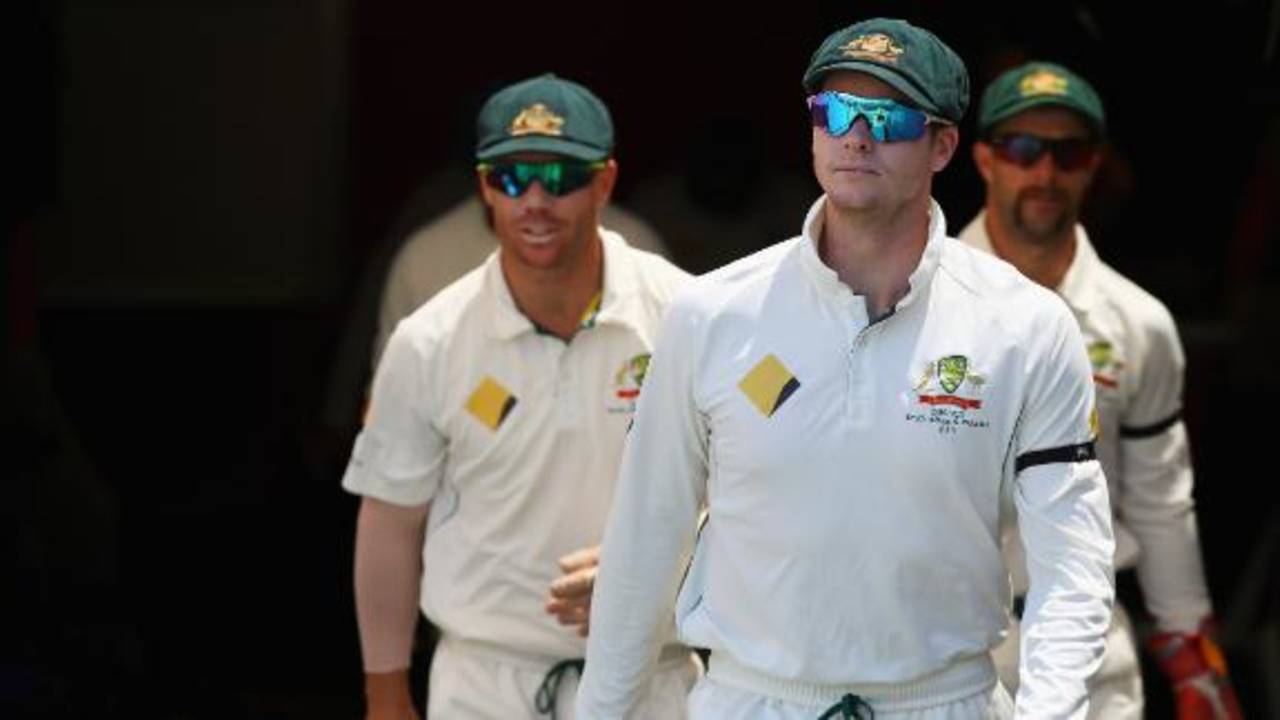Australia's pay dispute: Where to from here?
A look at the possible scenarios that could play out as the June 30 deadline approaches for Cricket Australia and the players
Brydon Coverdale
04-Jun-2017
The June 30 deadline is rapidly approaching for Cricket Australia (CA) and their players to reach agreement on a new Memorandum of Understanding. That means less than three weeks for the two parties to bridge a chasm that has seemed to be of Grand Canyon proportions over the past few months. Here we look at three scenarios that could eventuate over the coming weeks.
Agreement reached
This would require either significant compromise on both sides, or a capitulation on one. Last week, the Australian Cricketers' Association indicated it would be willing to show some flexibility on one major sticking point: the revenue types they are entitled to share in. It is a small concession, but it could also be a start. The difficulty is that the two parties have had such rigid starting positions that negotiation has, so far, barely been possible. However, even if a new agreement is reached by June 30 - and that remains a big "if" - lasting damage has almost certainly already been done to the relationship between CA and its players. If a compromise is reached, both sides will likely believe that they were the ones who bent for the good of the game and will harbour resentment towards the other. So, whatever happens, a fractious relationship going forward is now virtually a given.
Temporary compromise
One scenario that could become more and more likely with every passing day is that the two parties will agree to roll the current MoU over for one more year. This would be a stopgap measure designed to avoid the possibility of players becoming uncontracted free agents, and would give CA and the ACA another year to come to a long-term agreement. Of course, there is the chance that such a move would simply prolong the bad blood and delay the inevitable, and that by this time next year the situation will barely have changed.
On the other hand, coming so close to a serious schism that would damage Australian cricket may in itself be enough for both parties to agree to a one-year extension and finally begin talking properly. And there is precedent: in 2011, CA and the ACA agreed on a one-year extension to the existing MoU. On that occasion, the issues were resolved by the next year; this time around, the sticking point is potentially much thornier. There is also the complicating factor that female players are not part of the existing MoU, and therefore would not be part of any rollover.
No agreement reached
This is the great unknown. Some players would find themselves without contracts and thus effectively unemployed, and CA could find itself without the ability to field a team. It is possible that uncontracted players could find themselves locked out from national and state training facilities until the issue is resolved, and it is equally possible that players would seek opportunities to play elsewhere during the period of their unemployment.
The first event on the calendar post June 30 is the Women's World Cup, which begins on June 26: CA will pay the squad members up front and employ them until the end of their campaign (as stated above, women's players are not part of the current MoU). Next comes an Australia A tour of South Africa, which begins in early July. If no agreement has been reached, would CA seek to do the same and pay the players up front? Would the players refuse to tour? This would be a significant move by the players, for it would show that it is not only the highly-paid international players are willing to stare down CA, but the wider playing group as well. It would be particularly revealing of the strength of the player union if cricketers on the fringe of Test selection were prepared to sit out of a tour that could lead them to higher honours.
The issue is complicated by the fact that approximately half of Australia's domestic players are believed to be on existing multi-year contracts, and therefore would technically remain employed after June 30 regardless. Cricket Australia and the state associations could therefore select squads from that group of players, and it would then be up to the players whether to honour their contracts or stick tight with their fellow players and, effectively, go on strike.
The senior Australia team's next series is likely to be a Test tour of Bangladesh in August-September, and after that the domestic players have the Matador Cup and Sheffield Shield campaigns. If players on multi-year deals agree to play, these competitions could go ahead but in a weakened condition. South Africa's new domestic T20 league, set for November-December, would be an appealing prospect for some of the unemployed Australian cricketers at this time, but of course the majority would find themselves without an income stream, so the ACA has set up a fund to help them through until a new deal is reached.
But the greatest disaster of all would be if the biggest event on Australia's Test cricket calendar - the home Ashes series - is affected, either by cancellation or Australia fielding a sub-standard team. It would be damaging not only financially but also to the reputation of Australian cricket, both worldwide and with its own fans at home. For the good of the game, neither side can let it come to this, and even if no agreement is reached by June 30 they must find a way to compromise soon.
Brydon Coverdale is an assistant editor at ESPNcricinfo. @brydoncoverdale
